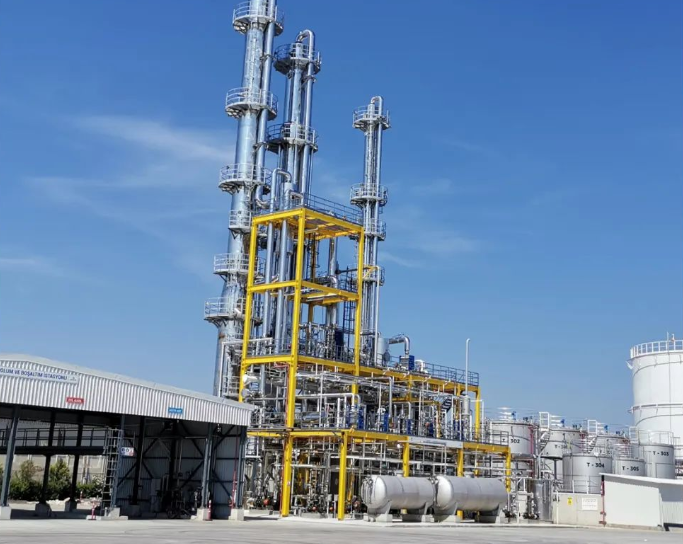An air separation unit (ASU) uses the conventional multi-column cryogenic distillation technique to produce O2 from compressed air at high purity and recovery rate. ASU's energy consumption is related to recovery since it is linked to the air flow required by thermal power.
An Air Separation Unit (ASU) is an industrial process that separates atmospheric air into its primary components—namely nitrogen, oxygen, and sometimes argon and other rare inert gases. The process is essential for producing high-purity gases used in various industries, including healthcare, manufacturing, and chemical production. Here's a breakdown of how an ASU works:

1. Atmospheric Air Intake
The air separation unit process begins by drawing in atmospheric air. This air contains approximately 78% nitrogen, 21% oxygen, and 1% argon, along with trace amounts of other gases. The air is typically filtered to remove dust, moisture, and other impurities.
2. Compression
The clean, filtered air is then compressed using large air compressors. Compressing the air increases its pressure and temperature, which is a critical step in preparing it for the next stages of the separation process.
3. Cooling
After compression, the air needs to be cooled to remove the heat generated during compression. This is done using heat exchangers and refrigeration systems. The cooled air is then further processed in the cryogenic section, where it is cooled to very low temperatures, often below -170°C (-274°F).
4. Cryogenic Distillation
The heart of the ASU is the cryogenic distillation process. Here, the air is cooled to a point where the main components (oxygen, nitrogen, and argon) liquefy at different temperatures.
- Nitrogen has the lowest boiling point at -196°C (-321°F).
- Oxygen liquefies at around -183°C (-297°F).
- Argon has a boiling point between those of nitrogen and oxygen.
By exploiting these different boiling points, the gases can be separated through a series of distillation columns. The air is first partially liquefied, and then the liquid and gas phases are separated in the columns.
5. Purification
The separated gases often need further purification to remove any remaining impurities. For example, argon, which is often separated as a byproduct of oxygen production, may contain traces of oxygen and nitrogen that need to be removed to achieve high purity.
6. Storage and Distribution
Once the gases are separated and purified, they are stored in large tanks as either a liquid or gas, depending on the intended use. Liquid storage is more common for transportation, as it allows for larger quantities to be stored in a smaller volume. The gases are then distributed via pipelines, cylinders, or cryogenic transport tanks to various end users.
7. Control Systems
Throughout the air separation unit process, sophisticated control systems monitor and adjust the operating conditions—such as temperature, pressure, and flow rates—to ensure optimal separation efficiency and safety.
Applications of ASU Products
- Oxygen is used in medical applications, steel manufacturing, and water treatment.
- Nitrogen is utilized in food preservation, electronics manufacturing, and as an inert gas in chemical processes.
- Argon is commonly used in welding, lighting, and in the production of semiconductor devices.
The air separation process is energy-intensive and requires precise control, but it is crucial for supplying industries with the pure gases they need for various applications.
















